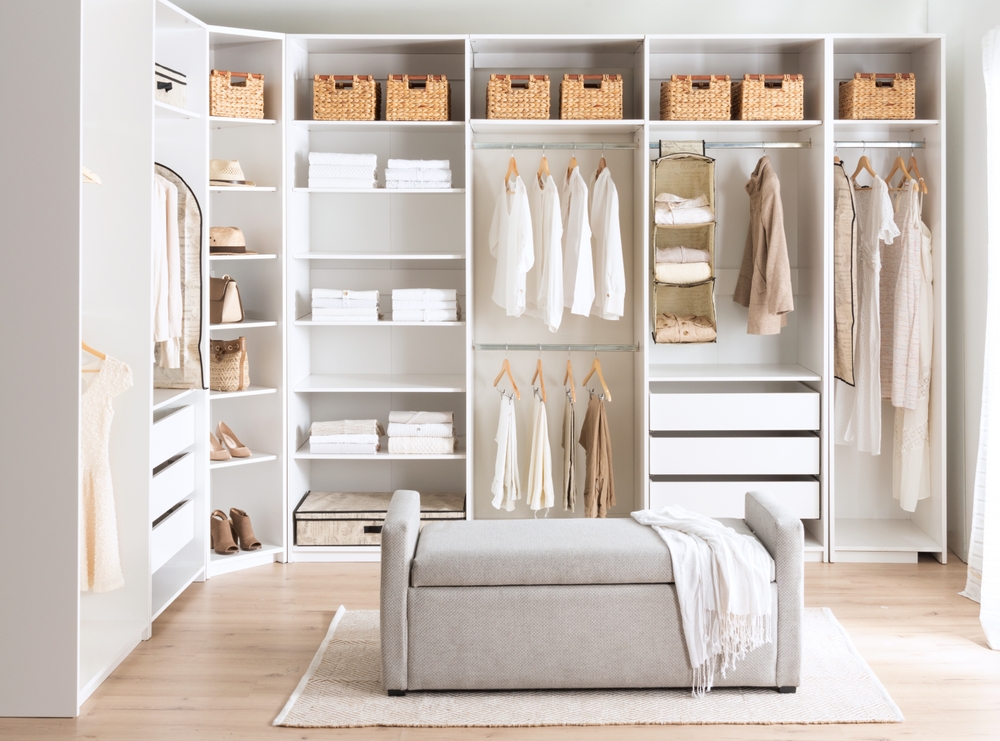Organizing the closet in a bedroom can prove to be quite challenging, but employing the right strategies can help you make it work efficiently for your needs. Whether you have a spacious walk-in closet or a small wardrobe, these best practices will help you create a functional and attractive space. Here’s a design guide to get you started on your closet makeover.
Assess Your Needs
Before diving into the project, take a moment to assess what you need from your closet. Do you have more clothes than space? Are you sharing the closet with a partner? Are you using this space to store miscellaneous items? Identifying these needs will help you choose the best closet organizer systems to fit your lifestyle.
Declutter
One of the first steps in closet organization is to declutter. Make sure to take everything out of the closet and organize the items into different categories: keep, donate, and discard. This will give you a clear view of what you have and make it easier to organize the remaining items.
Use Vertical Space
Vertical space is your best friend in regards to small closet organization. Install shelves or hanging organizers to make the most of the available height. This approach not only maximizes storage but also keeps your items easily accessible.
Invest in Closet Organizer Systems
Closet organizer systems can make a world of difference. These systems often include shelves, drawers, dividers, and hanging rods. Closet organizer systems can be customized to fit your space and needs without breaking the bank! Ask us here for a customizable system that can adjust and grow with your changing wardrobe needs.
Group Similar Items Together
Create Categories: Begin by sorting your clothes into distinct categories. The most common categories include:
- Pants: Jeans, trousers, leggings, shorts.
- Shirts: T-shirts, blouses, dress shirts, casual shirts.
- Dresses: Casual dresses, formal dresses, summer dresses.
- Jackets and Coats: Light jackets, heavy coats, blazers, cardigans.
Subcategories: Within each main category, consider further subcategorizing based on specific use or style. For example:
- Pants: Work trousers, casual jeans, workout leggings.
- Shirts: Long sleeves, short sleeves, sleeveless.
Designate Space: Allocate specific sections of your closet for each category. Use separate rods, shelves, or sections to keep these categories distinct and easily accessible.
Use Dividers: If you have a lot of items within a category, consider using dividers or separators to keep different types organized within the same category. For example, dividers for casual and formal pants.
Color Coding: Arrange Items by Color
Color coding not only makes it easier to find items but also enhances the visual appeal of your closet, making it look tidy and organized.
Create a Color Spectrum: Within each category, arrange items by color in a way that creates a gradient or spectrum. Common sequences include:
- Light to Dark: Start with white, then move through light colors, and end with dark shades.
- Rainbow Order: Red, orange, yellow, green, blue, indigo, violet.
- Color Subgroups: If you have a large variety of shades within one color, consider grouping these shades together. For example, light blue, medium blue, and dark blue.
Color coding not only makes it easier to find items but also enhances the visual appeal of your closet, making it look tidy and organized.
Use Clear Containers
Clear containers are perfect for storing smaller items like accessories, shoes, or seasonal clothing. Because they are transparent, you can quickly see what’s inside without rummaging through each box. Labeling the containers can also add an extra layer of organization.
Add Lighting
Good lighting can transform your closet space. Add LED lights or battery-operated stick-on lights to illuminate dark corners. Proper lighting not only makes it easier to find items but also enhances the overall look of your closet.
Rotate Seasonal Items
To keep your closet from becoming overcrowded, rotate seasonal items. Store off-season clothes in bins or under-bed storage to free up space for the current season’s wardrobe. This practice will keep your closet organized year-round.
Personalize Your Space
Make your closet a reflection of your style. Add decorative touches like a rug, artwork, or even a small mirror. Personalizing your closet will make it a more enjoyable space to use.
By following these best practices, you can create a functional and stylish closet. With a little planning and effort, your bedroom closet can become a well-organized and pleasant part of your home.
Ready to reclaim your space? Make home organization a priority with The Closet Company!
